A key piece of equipment for any home gym is a solid set of resistance bands with varying load capacity.
I don’t want to bore you with all of the benefits that come with resistance band training and how it can improve your lifts but a key stumbling block from many people is having a place at home to properly (and safely) anchor a resistance band.
How to anchor resistance bands?
To safely and securely anchor resistance bands you should use a dedicated door or wall anchor mount which will provide a stable and solid platform for you to anchor your resistance bands. You can also tie a resistance band around a solid vertical object like a pole, tree, or power rack.
In this article, I’ll cover some of the best methods you can use to anchor a resistance band as well as some of the equipment that you might need (don’t worry, there are options that are free).
What Can You Use to Anchor a Resistance Band
If you’re new to resistance band training, you might be surprised to find that there are a range of options you can use to anchor a resistance band. Some are products specially made for anchoring resistance bands whereas others are simple solutions making use of items around your home or garden.
The best resistance band anchor will depend on what type of resistance bands you have and how you want to anchor them so below are some of the most common options:
Door Anchor
A door anchor is the most commonly used piece of kit for using resistance bands in your home. They can be used with tubes, therapy bands (therabands), and closed-loop resistance bands for truly universal application.
Door anchors are useful for those living in rented accommodation or apartments as the internal doors will offer a solid place to anchor your bands without having to drill into any walls. Door anchors offer versatility and allow you to place the bands at various heights to suit different kinds of exercises.
Boss Enterprise offers a good quality door anchor that’s heavy-duty to allow for progression (and door security) whilst being a very inexpensive option.

Wall Anchor
A wall anchor is a more permanent solution than a door anchor and involves mounting a clip or hook to a wall to make for a secure and solid option. This is best for homeowners with solid walls that they are free to drill into as they please.
The benefit of a wall anchor is of course how solid it will be. Once set, a wall anchor will be able to hand heavy-duty resistance bands without the fear of damaging any home fixtures.
What I will say is that positioning is limited. Most wall anchors come with three clips for a variety of positions but once these are drilled into place, they are fixed in position. While three positions will be enough for most people, it certainly won’t be enough for a dedicated weightlifter.
In terms of options for wall anchors, the OTPT resistance band anchors from Bob and Brad are a good option. They are minimal in design to be space-saving and they are incredibly solid with each clip able to support up to 800lbs!

Pole Anchor
Personally, I don’t own a door or wall anchor and my go-to choice for anchoring a resistance band is simply to tie it around something. This won’t work as well for specific types of resistance bands and you need to be using a closed-loop band rather than a resistance band tube or theraband.
The reason for this is because you’ll tie it around a solid vertical object like a pole or most commonly a power rack. The images below give a quick outline of how you can securely tie a resistance band around a vertical pole allowing you to select any height you want.
Door and wall anchors can be limiting and simply tying your resistance band around the side of your power rack or pull up bar is one of the easiest solutions that most people training at home don’t think to utilize.
Weight Plate Anchor
Again, another underutilized option for anchoring a resistance band is a weight plate or other type of equipment (loaded barbell, etc…). Tri-grip weight plates are ideal for looping a closed-loop resistance band through if you can make use of a few 45lb plates, you’ll have a solid anchor.
For larger bumper plates, you’ll struggle to use this as a solid anchor unless you are using a theraband to thread it through the center but this would only really work for light exercises where minimal force is used.
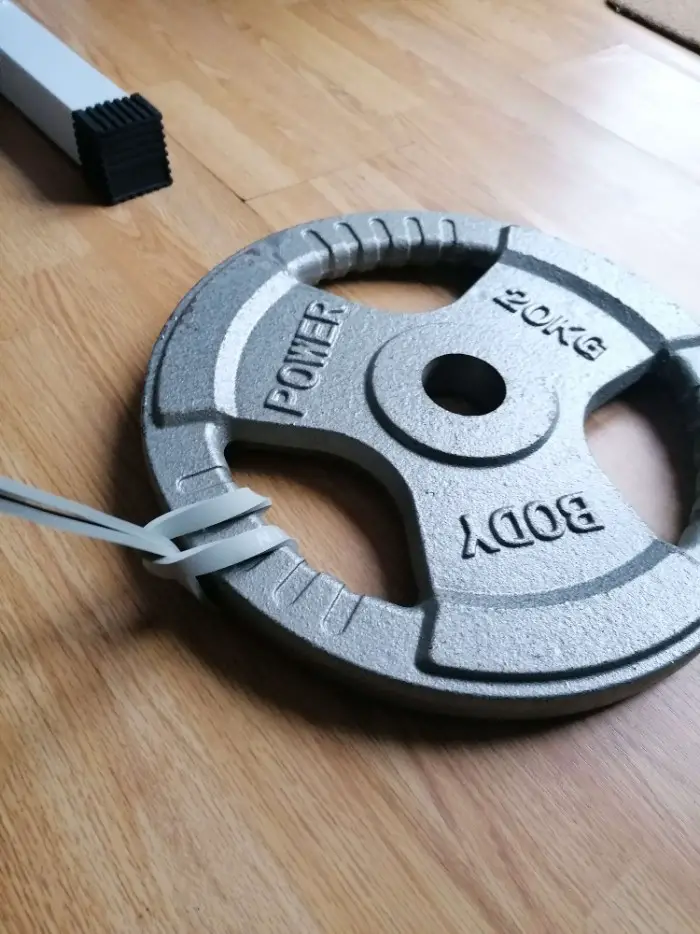
The legs on a weight bench are another stable surface that you can use to anchor your resistance bands and this is particularly beneficial for use on a bench press, seated press, or even lateral movements and curls.

Body
Your (or a partner’s) body can also be enough to anchor a resistance band for some exercises. The simple method is to stand on your resistance band on the inside of the loop to do presses, raises, curls, and tricep extensions.
You can even stand on your resistance bands to support squats and other leg exercises like in the video below:
Using your body is a simple solution but it’s also arguably one of the most awkward. If you have a fixed object in your house or garden, I’d always recommend this approach first as it will ensure your resistance band is secure (they can slip from underneath feet) and will generally just be less awkward to work around.
How to Anchor Resistance Bands
If you are not opting for the product options of a door or wall anchor which come with instructions for use, then it’s best to know how to anchor a resistance band without this. In my opinion, you’ll want a set of closed-loop resistance bands to offer you the most flexibility and loading capacity like this set from INTEY.
I have 2 x 16lb resistance bands for general purpose use and the closed-loop allows me to anchor them to any fixed point that I feel is most suitable. Below I’ll run through the steps you’ll need to follow for how to anchor resistance bands.
Step 1 – Find an anchor point
Step 1 is of course finding a suitable anchor point. This anchor point needs to be something that won’t move under force and has a relatively small diameter so that you don’t lose any stretch in the resistance band before even starting.
TV stands, kitchen chair (or tables), coffee tables, door handles, are all examples of things you should not be using as an anchor point for resistance bands. These items are either not fixed into place or do not have enough support to resistance forceful load.
A door handle can easily be broken whilst pipes and other “delicate” house fixtures should also be out of consideration. Instead, look for solid objects like the following:
- Heavy kitchen table leg (solid wood)
- Power rack
- Exposed columns
- Trees
- Poles
- Gazebo or pergola
Step 2 – Loop the band around the anchor point
Once you’ve found a good anchor point, you’ll next want to loop your band around it and tie it in securely. While there are different ways to secure a resistance band to an anchor point, tying a closed-loop band is definitely the best option.
The images below will show you how to correctly tie a resistance band to an anchor point. It’s an incredibly simple and quick process but one that will allow you to anchor a resistance band almost anywhere with ease.
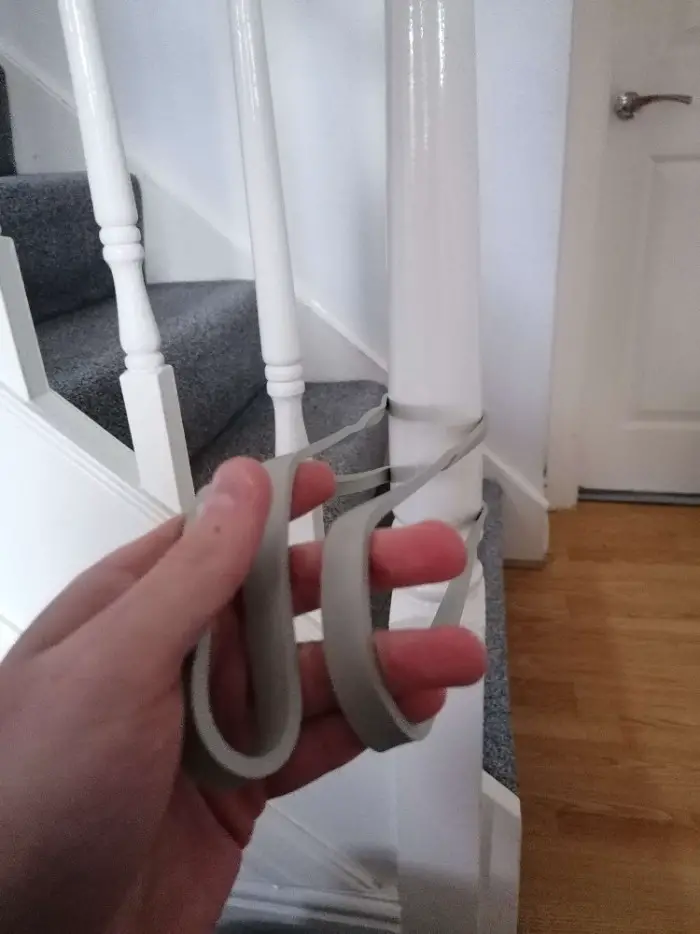
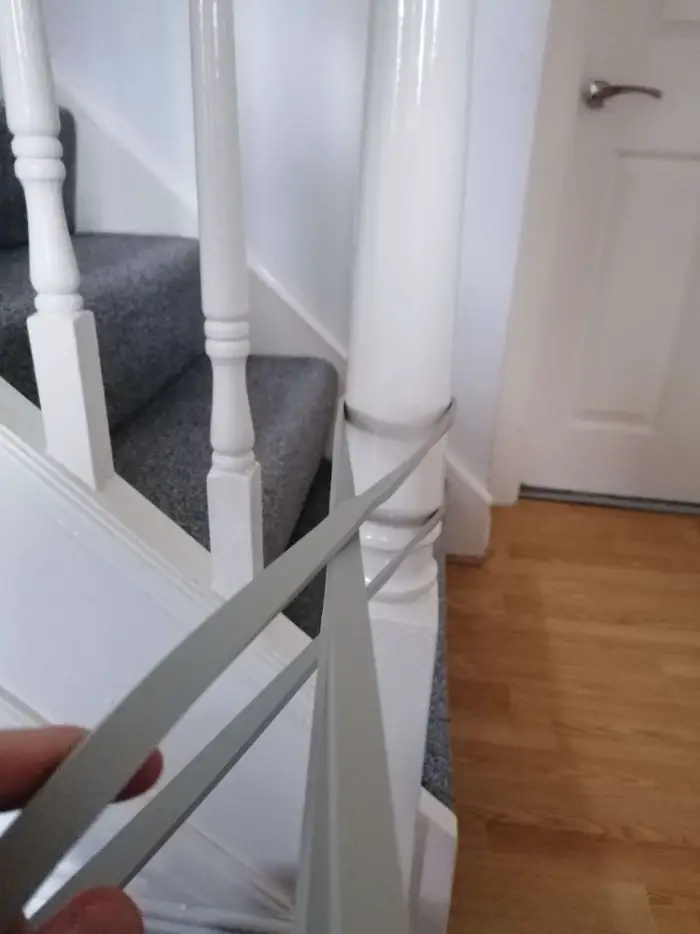
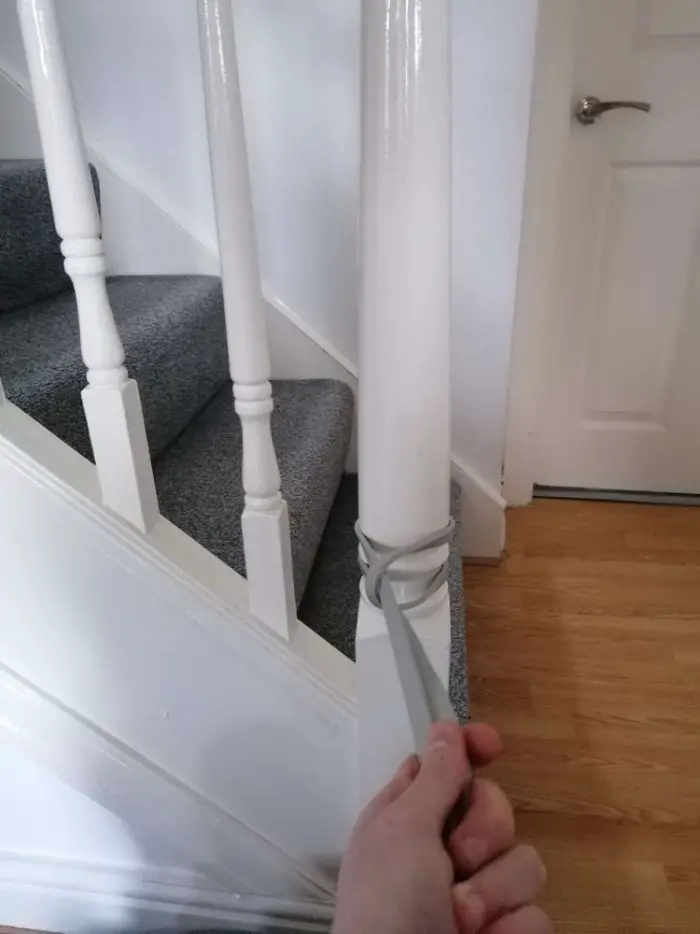
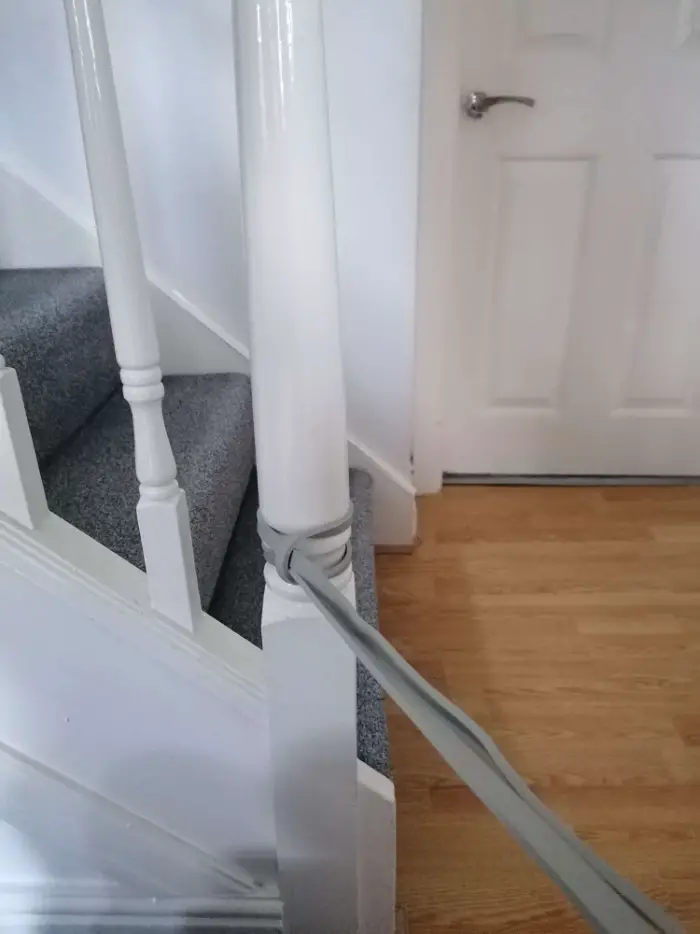
** Important – When anchoring resistance bands to a fixed object, always check first to ensure they can handle the load. Resistance bands at the high end can generate up to 200lbs of a load so using a hallway banister or something else that seems secure may not hold up against heavier loads.
Final Thoughts
Just owning a set of resistance bands offers a great option when it comes to the versatility of exercises but you’ll be limited in use if you don’t know how to anchor resistance bands safely and securely.
A door or wall anchor is the best option if you want a simple and convenient solution (especially if you own a set of tube resistance bands or a theraband) but with a closed-loop resistance band, your anchor points are as varied as your imagination.
Follow the steps laid out in this article and you’ll easily be anchoring your resistance bands wherever you are!

